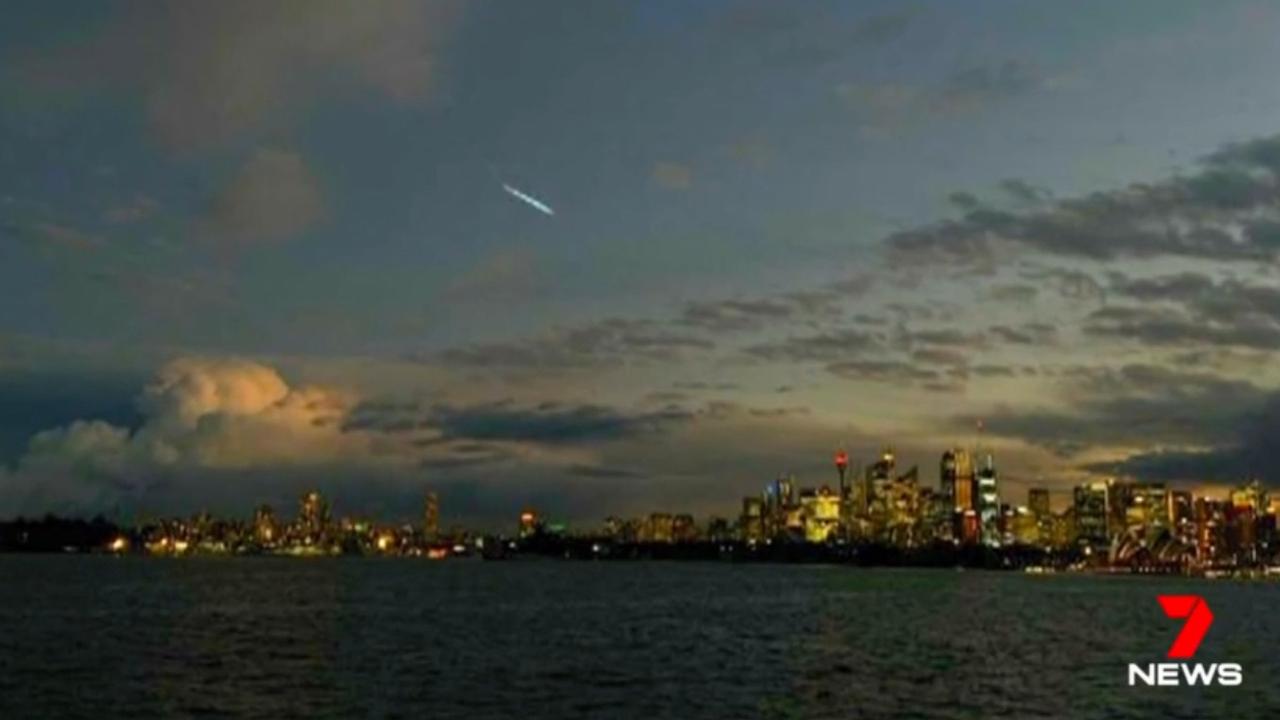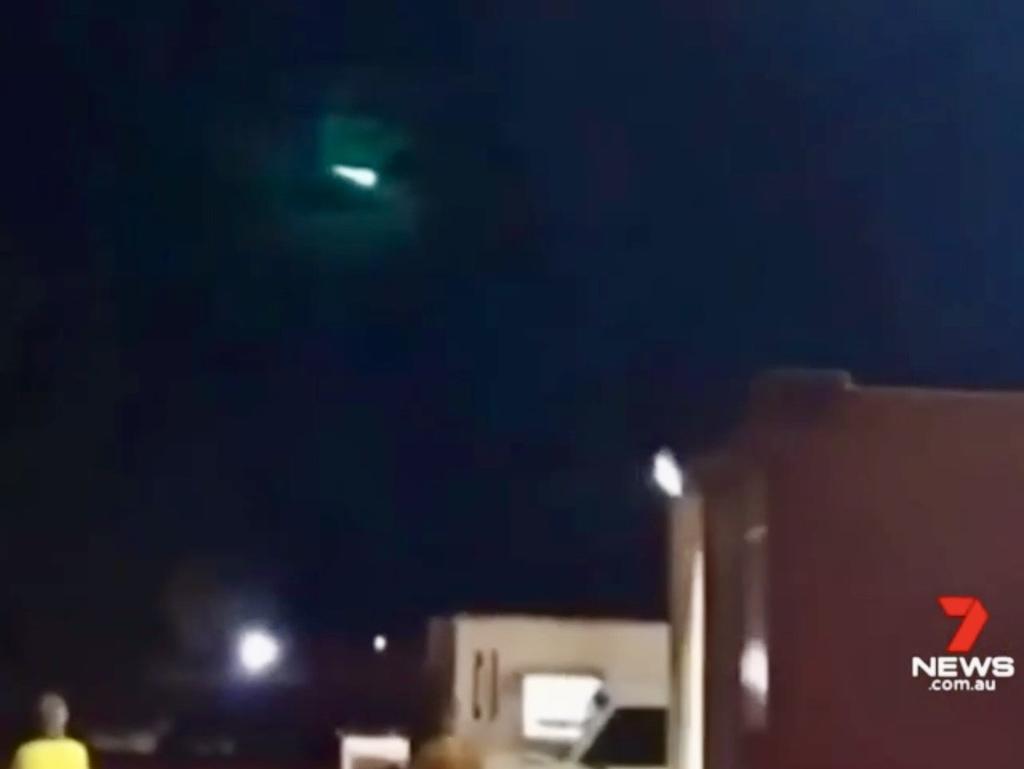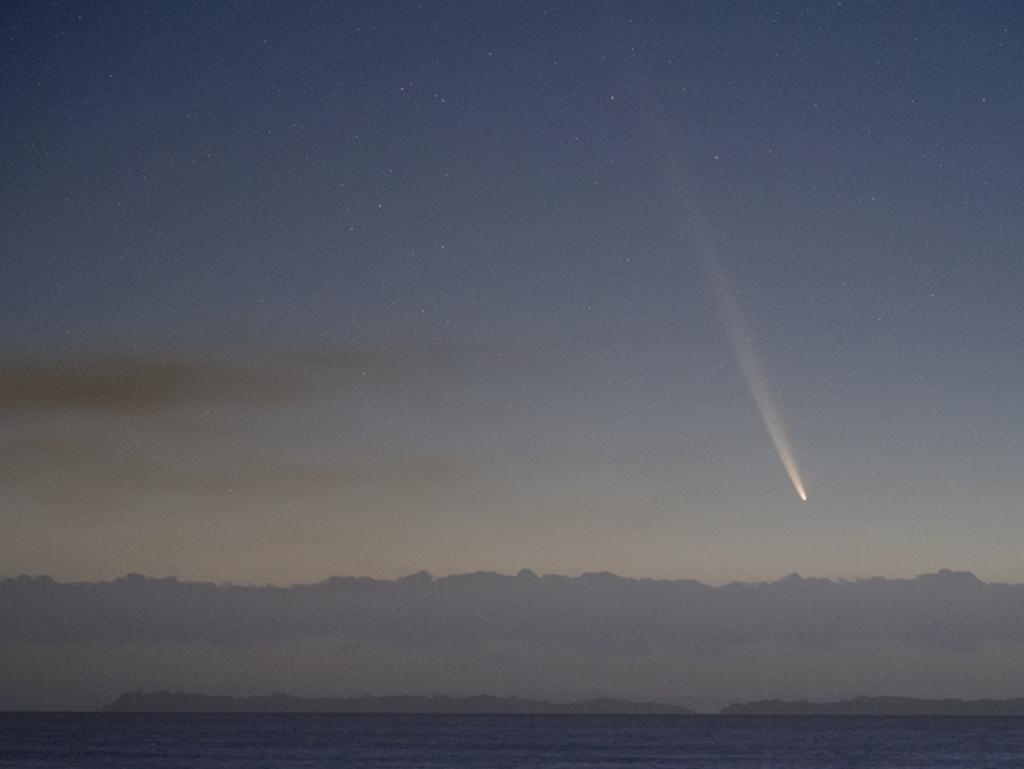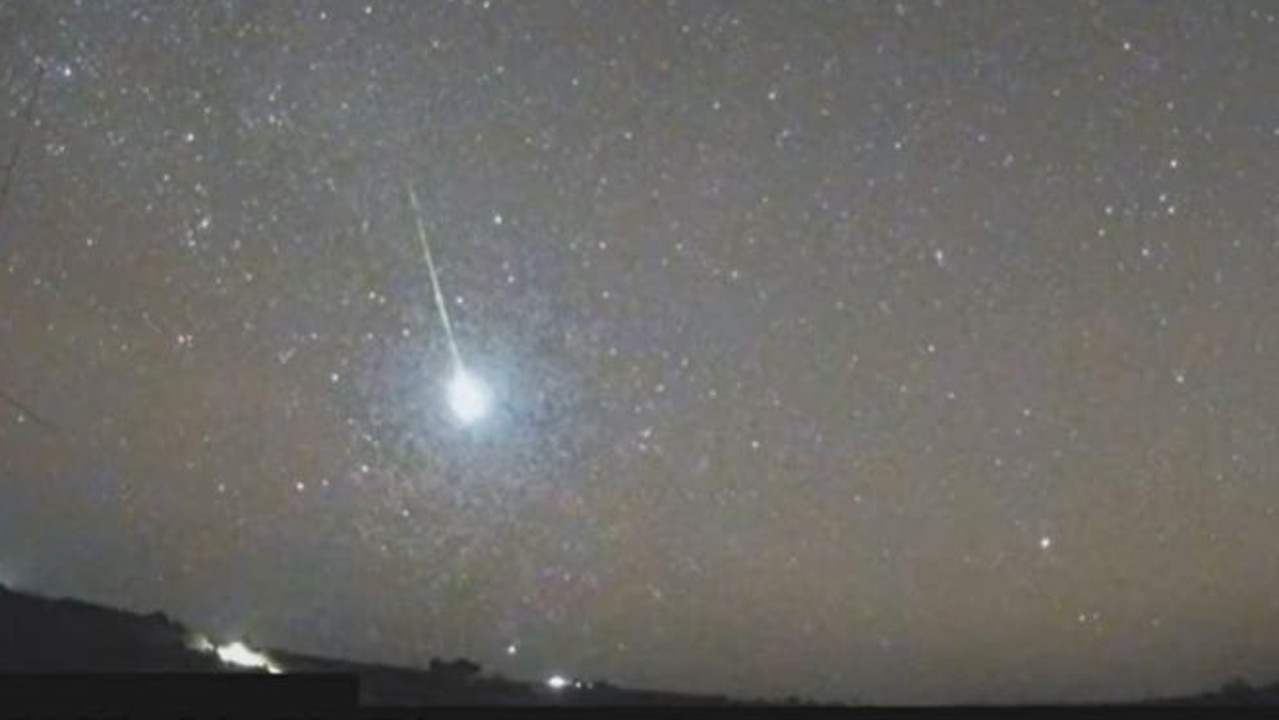Surprise from space seen streaking down the east coast of Australia
Early risers along the east coast of Australia spotted a bright ‘fireball’ streaking across the sky early Thursday morning, with astrophysicists suggesting the celestial treat was likely a meteor

READING LEVEL: GREEN
A celestial* body lit up skies along Australia’s east coast on Thursday morning, leaving early-risers questioning what the bright streak could possibly be.
People from Toowoomba in Queensland down to Newcastle and Sydney in New South Wales saw the bluish-green tail illuminate* the sky before 6am.
While there is a comet* on a million-year orbit of the sun forecast to be seen around this time, one expert said the bluish tinge indicated the bright object was a meteorite*.
One man called Ben Fordham’s radio show 2GB to report seeing a shooting star, as calls rushed in from people in New South Wales and Queensland.

“It looked like a meteorite or a fireball or something,” one male caller said.
Australian National University (ANU) astrophysicist* Dr Brad Tucker called in to add some expertise* to the conversation.
“It definitely sounds like a meteor, based on what everyone’s seeing,” he told Mr Fordham.
Dr Tucker explained that meteors move across the sky very quickly, from 50,000 to 100,000 km/hr.
But the biggest clue that the bright light was a meteor was the green tinge, which is due to its iron-nickel composition* burning as the high speeds create friction* with the atmosphere.

“It’s unlikely fragments fell on the ground,” Dr Tucker said.
“It clearly covered a lot of distance in a short amount of time. So definitely a broken chunk of an asteroid* that randomly hit the Earth’s atmosphere.
“A lot of them do end up in the ocean. But there’s been a few in the past couple of years that because of reports like we’ve just been hearing, and videos and footage that people have, we can triangulate* their location.
“There was a big one that happened over Milton in Queensland last year where this exact thing happened.”

The Draconid meteor shower* peaked on October 8, where a few meteors per hour were forecast, but they were mainly visible in the northern hemisphere.
There are two comets which may be visible this month.
Comet C/2023 A3 will be visible low in the west after sunset, beginning around October 14, and Comet S1 will be visible in late October to early November, low in the east before sunrise.
POLL
GLOSSARY
- celestial: relating to the sky and outer space
- illuminate: light up, brighten, make something more visible
- comet: large objects made of dust and ice that orbit the sun
- meteorite: when a meteoroid – rocks in space ranging from dust grains to small asteroids – survives a trip through the atmosphere and hits the ground, it’s called a meteorite
- expertise: special skill or knowledge acquired by training, study or practice
- composition: what something is made of, its structure, constitution, make-up
- friction: tension, resistance, force that makes is hard for one surface to move against or past the other
- asteroid: small, rocky objects that orbit the sun but are much smaller than planets
- triangulate: to divide an area into triangles in order to measure it or draw a map of it
- Draconid meteor shower: also called the Giacobinids, named after constellation Draco
EXTRA READING
Eerie blue fireball lights the sky
Glowing meteor fireball lights up Australian sky
QUICK QUIZ
- What expertise did caller Brad Tucker bring to the 2GB debate?
- Which two comets may be visible in the coming weeks?
- What is the speed range for meteors moving across the sky?
- What was the biggest clue about the object’s identity and what caused it?
- What is the forecast duration of one comet’s current orbit around the sun?
LISTEN TO THIS STORY
CLASSROOM ACTIVITIES
1. Nothing to worry about!
Create a poster or infographic. Your purpose is to help people to understand that comets are nothing to worry about. Use information from the story and possibly your research skills for ideas and information.
Time: allow at least 30 minutes to complete this activity
Curriculum Links: English, Science
2. Extension
“At first we all thought it was a comet, but then …”
Write a story that starts with this sentence.
Time: allow at least 30 minutes to complete this activity
Curriculum Links: English
VCOP ACTIVITY
Imaginative dialogue
Imagine you were there during the event being discussed in the article, or for the interview.
Create a conversation between two characters from the article – you may need or want to include yourself as one of the characters. Don’t forget to try to use facts and details from the article to help make your dialogue as realistic as possible.
Go through your writing and highlight any punctuation you have used in green. Make sure you carefully check the punctuation used for the dialogue and ensure you have opened and closed the speaking in the correct places.


